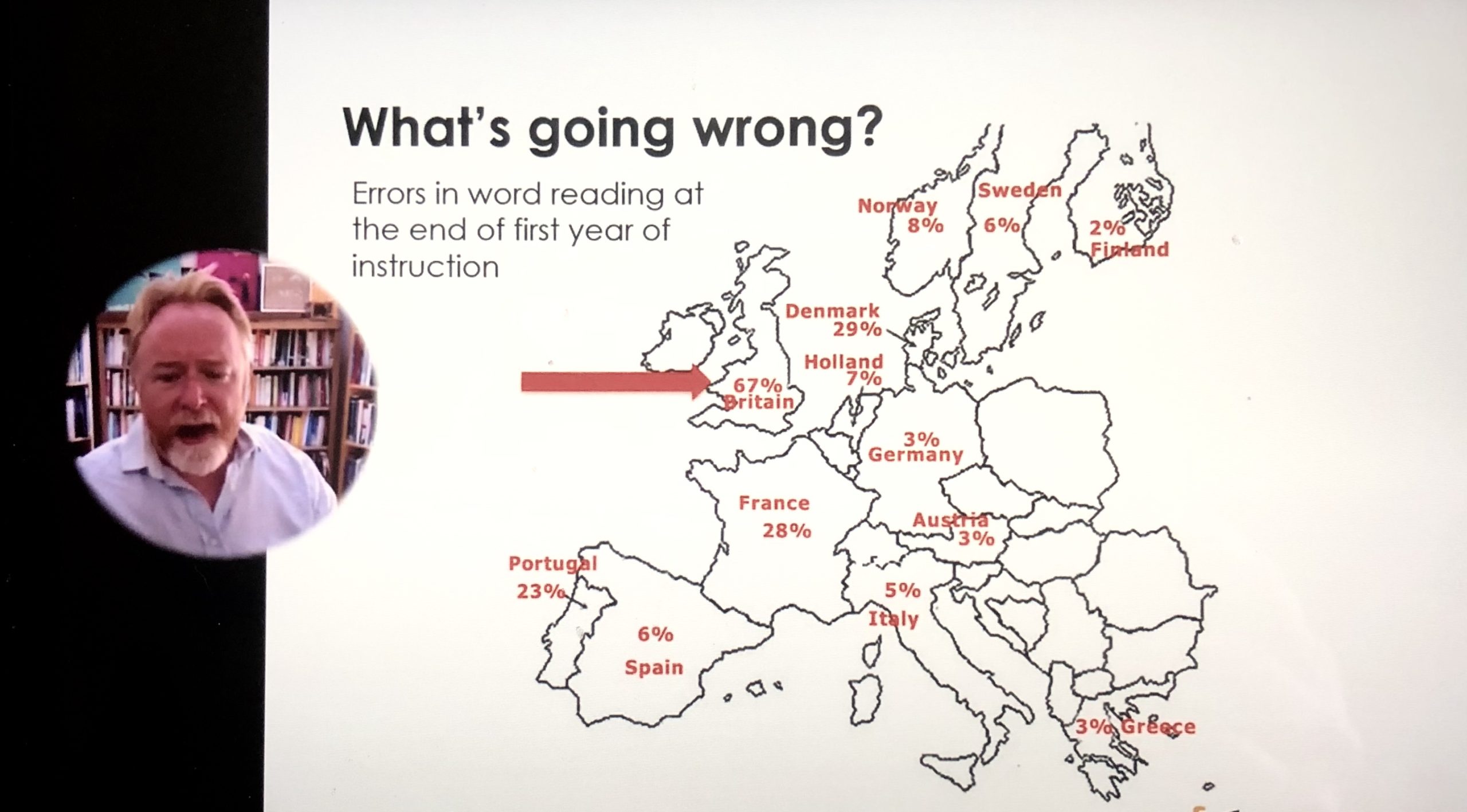Både PPT- bilderna under de 25 minuternas presentation och de punkter som togs upp finns på länken: https://learningspy.co.uk/reading/why-we-need-to-read-aloud/ Resten av tiden bestod av frågor från publiken.
Referenser:
-
Baddeley, Alan. “Working memory: Theories, models, and controversies.” Annual review of psychology 63 (2012): 1-29.
-
Bell, Laura C., and Charles A. Perfetti. “Reading skill: Some adult comparisons.” Journal of Educational Psychology 86.2 (1994): 244.
-
Clark, Christina. “Children’s and Young People’s Reading in 2012: Findings from the 2012 National Literacy Trust’s Annual Survey.” National Literacy Trust (2013)
-
Coltheart, M., Davelaar, E., Jonasson, J. T., Besner, D., & Dornic, S. (1977). Attention and performance
-
Ferrand, Ludovic. Cognition et lecture: processus de base de la reconnaissance des mots écrits chez l’adulte. Bruxelles: De Boeck Université, 2001
-
Gernsbacher, Morton A., Kathleen R. Varner, and Mark E. Faust. “Investigating differences in general comprehension skill.” Journal of Experimental Psychology: Learning, Memory, and Cognition 16.3 (1990): 430
-
Goswami, Usha, Jean Emile Gombert, and Lucia Fraca de Barrera. “Children’s orthographic representations and linguistic transparency: Nonsense word reading in English, French, and Spanish.” Applied Psycholinguistics 19.1 (1998): 19-52
-
Kosslyn, Stephen M., and Ann M. Matt. “If you speak slowly, do people read your prose slowly? Person-particular speech recoding during reading.” Bulletin of the Psychonomic Society (1977)
-
Rubenstein, Herbert, Spafford S. Lewis, and Mollie A. Rubenstein. “Evidence for phonemic recoding in visual word recognition.” Journal of verbal learning and verbal behavior 10.6 (1971): 645-657
-
Scarborough, Hollis S. (2001). Connecting Early Language and Literacy to Later Reading (Dis)Abilities: Evidence, Theory, and Practice. In Susan B. Neuman and David K. Dickinson (eds), Handbook of Early Literacy (New York: Guilford Press), pp. 97–110
-
Seidenberg, Mark S., and David C. Plaut. “Evaluating word-reading models at the item level: Matching the grain of theory and data.” Psychological Science 9.3 (1998): 234-237
-
Seymour PH, Aro M, Erskine JM. Foundation literacy acquisition in European orthographies. Br J Psychol. 2003;94(Pt 2):143‐174. doi:10.1348/000712603321661859
-
Stanovich, Keith E. Matthew Effects in Reading: Some Consequences of Individual Differences in the Acquisition of Literacy, Reading Research Quarterly 22 (1993): 360–407; and Stuart J
-
Westbrook, Jo, et al. “‘Just reading’: the impact of a faster pace of reading narratives on the comprehension of poorer adolescent readers in English classrooms.” Literacy 53.2 (2019): 60-68.



